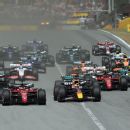The Monaco Grand Prix has long been considered to be the jewel in the crown of F1.
Since 1955 it has been a mainstay on the schedule and only failed to take place in 2020 due to the COVID-19 pandemic.
The circuit includes some of the most famous parts of any F1 racetrack: Casino Square, the tunnel section and the blisteringly fast Swimming Pool section, to name three.
Monaco’s tight, twisty and punishing circuit is considered the ultimate test of driver talent. While the car vs. driver debate has lingered as long as racing has existed, Monaco is perhaps the one place above all others where a driver can make the key difference.
As such, Monaco’s qualifying session is often one of the best, most intense and most important of the season. A qualifying lap around Monte Carlo is about as unforgiving as they come. No-one knows this better than Ferrari’s Charles Leclerc, who grew up in Monaco and caught his bus to school at what is the final corner of the race. After taking pole position last year, he crashed out and was eventually unable to start the race.
A drawback of the nature of the circuit, and F1’s increasingly wider cars, is that the race tends to be more processional, with overtaking all but impossible at the majority of locations.
Most remarkable about Monaco is how the principality returns to normal almost as soon as track action is done, with the parts of the circuit being reopened to the public intermittently during the weekend. In the hours after the track action stops, fans can visit the bars which line the final sequence of corners and drink on the racetrack.
However, for all of its heritage and fame, Monaco no longer seems untouchable on the F1 schedule the way it once did. Monaco’s current contract expires in 2022, and its future beyond that remains uncertain, with no clear solution to make the Sunday…
Click Here to Read the Full Original Article at www.espn.com – RPM…

